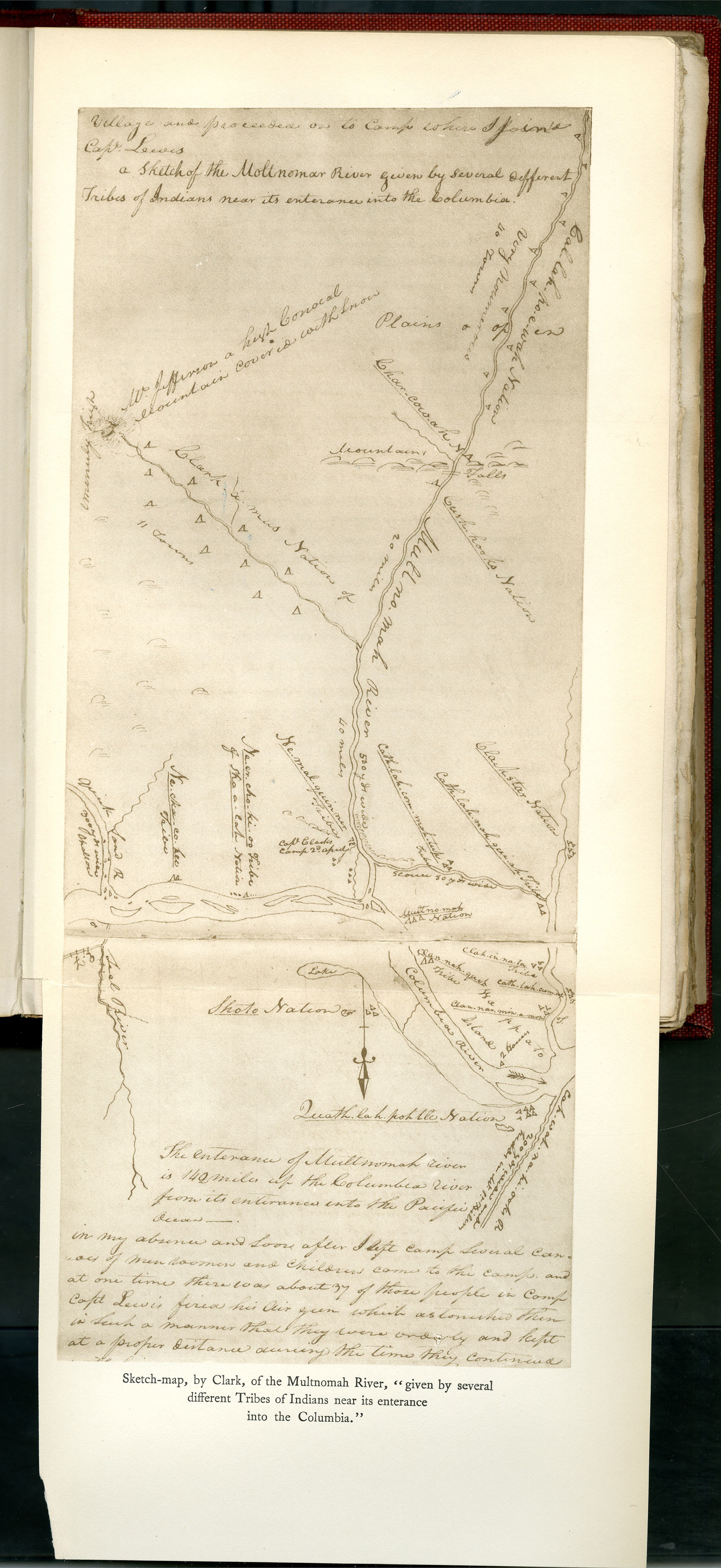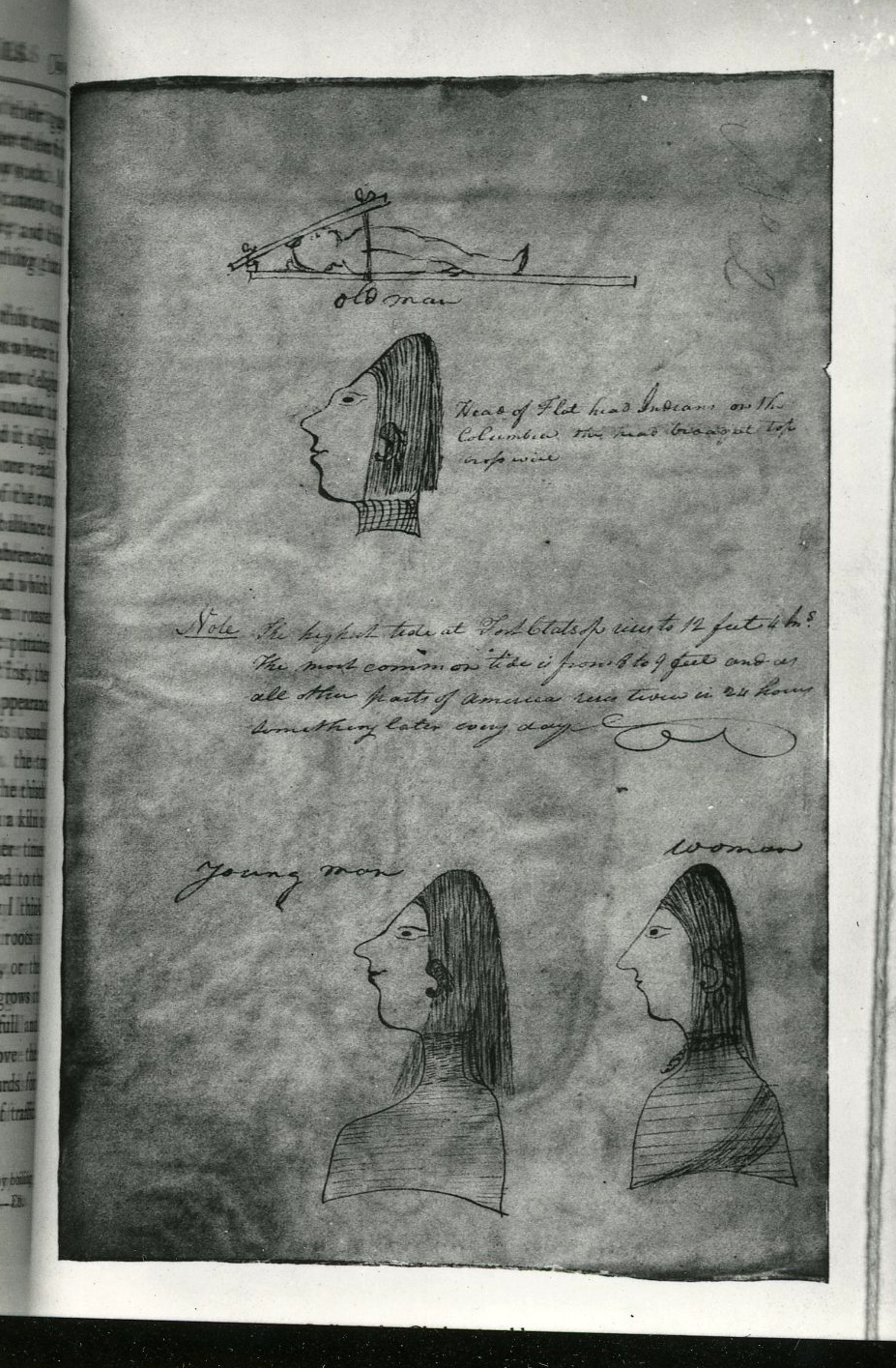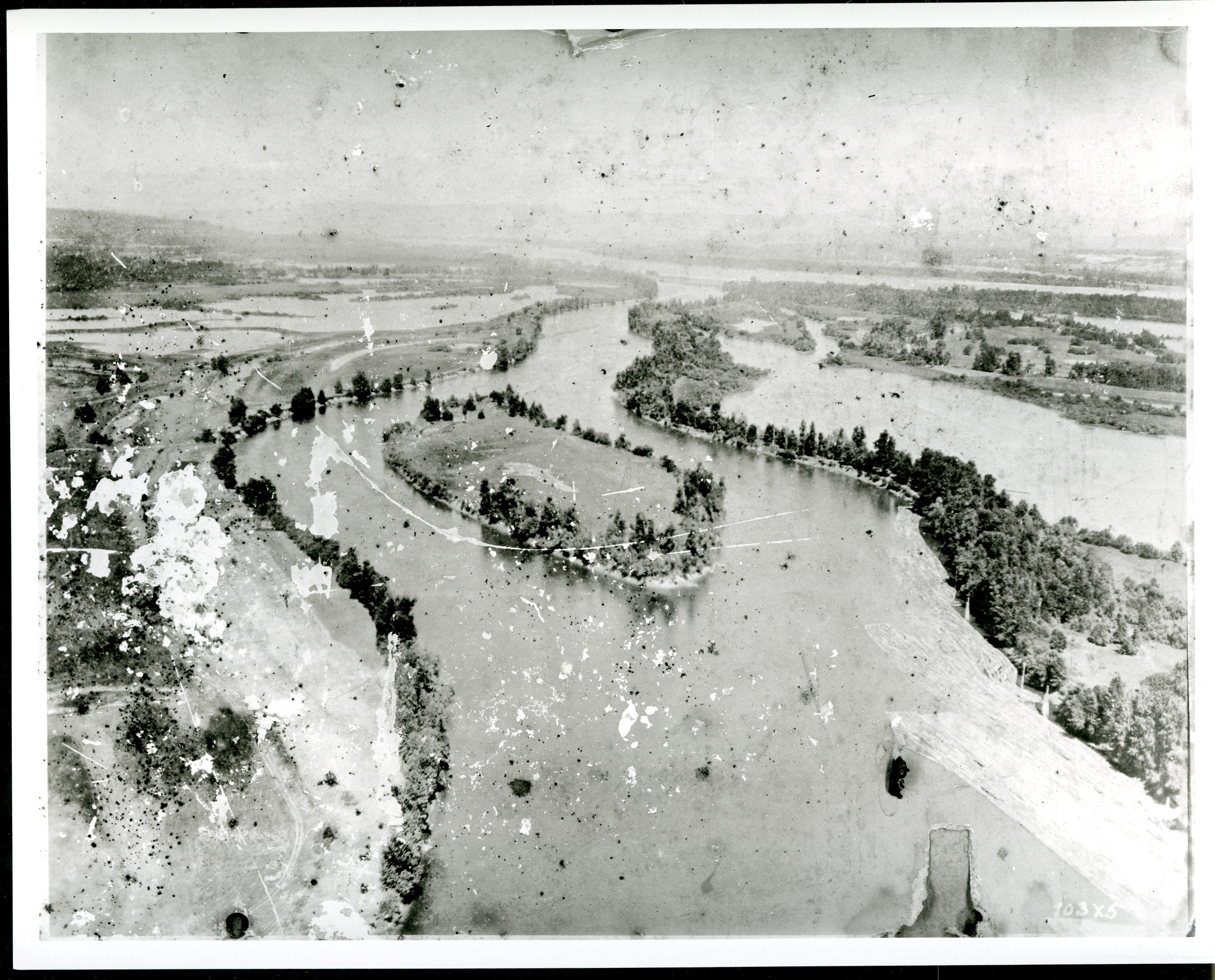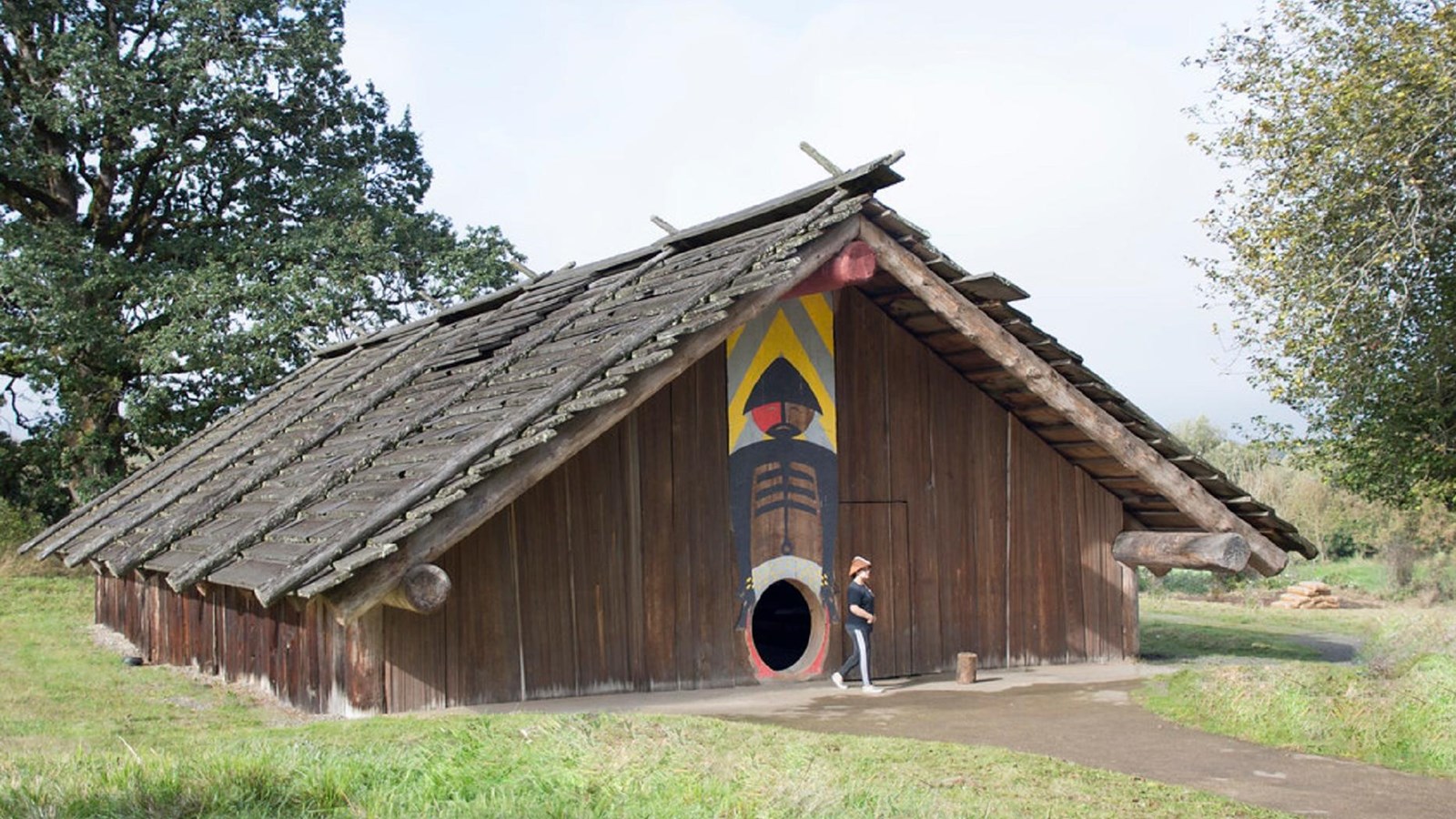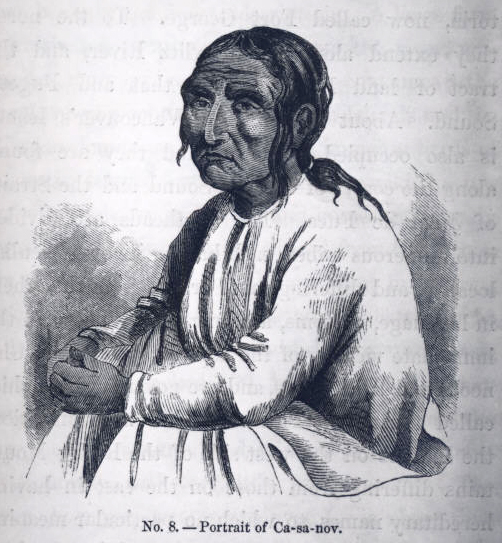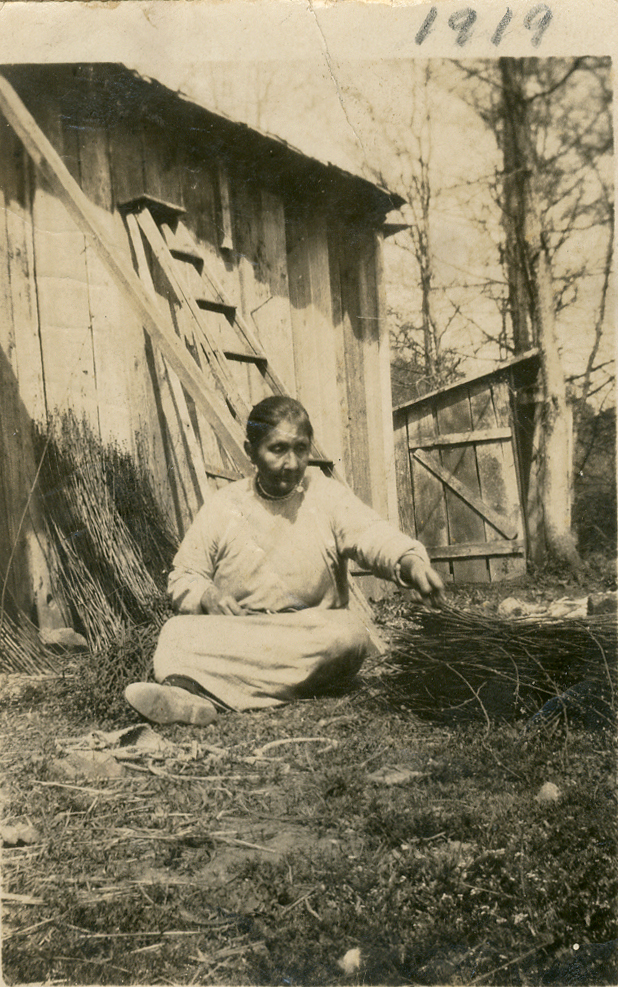Lewis and Clark called them the "Wappato Indians," the people who inhabited the villages that lined the riverbanks in the "Wappato Valley," the resource-rich lowlands along the Columbia River between Vancouver and Kalama, centering on Sauvie Island. "Wappato" was a reference to wapato (Sagittaria latifolia), a tuber found throughout the valley that was an important food for those who lived there. Wapato Valley villagers had no common name for themselves or any political ("tribal') organization beyond the village level, though they shared a common culture and most are believed to have spoken a variety of the Upper Chinook language. They have also been called Multnomah, after the name of one of their largest villages, but early nineteenth-century observers did not use Multnomah as a collective term and referred to each village separately. (The name “Wapato” has been applied elsewhere by whites, including Wapato Lake in Washington County, Oregon and Wapato in Washington state, but Lewis and Clark’s “Wappato” has historic priority.)
About twenty villages in the Wapato Valley were documented in the early nineteenth century, all of them likely occupied by Upper Chinook people. The largest villages were Clackstar near Scappoose, Cathlapotle on the lower Lewis River, Multnomah on the Columbia bank of Sauvie Island, the Shoto villages on Lake River north of Vancouver Lake, and Cathlacumups at the lower end of Multnomah Channel.
What we know about Wapato Valley Native culture comes from early nineteenth-century accounts, including the journals of Lewis and Clark, fur traders, and missionaries; archaeological site reports; and the 1930 dictated ethnographic and myth texts of a Clackamas speaker, Victoria Wishikin Howard, who was from a neighboring culturally similar group of people.
The Wapato Valley people lived in large, multifamily red cedar plankhouses, some occupied and regularly renovated for centuries. Each plankhouse had a central hearth or hearths, and families had their own sleeping berths along the walls, plus storage areas beneath the berths and in pits. The ceiling planks were removable, and entrance was through a door at the front end. The highest-ranking family had living quarters at the rear of the plankhouse, the sacred end. Wives were preferentially from outside villages and were not related by blood to their husbands. Marital ties carried economic rights with them, creating socioeconomic networks that tied villages together. "Chiefs" were high-ranking individuals, wealthy and frequently polygamous, who had many slaves acquired through trade or raiding, and who may have coordinated some economic and intervillage activities.
The seasonal round of Wapato Valley people was split into two broad halves: cold season, when they lived in winter villages, and warm season, when they lived in temporary structures near those places where wild foods were available. Salmon, particularly chinook (Oncorhynchus tshawytscha) in season and coho (O. kisutch) in the fall, were staples; but sturgeon (Acipenser transmontanus), eulachon (Thaleichthys pacificus), and small backwater fishes (Catostomus, Cyprinid species) were important as well. Wapato was harvested from ponds and lakes, camas (Camassia quamash) from wet prairies, and various berries and Oregon oak (Quercus garryana) acorns from dry prairies and open woods. All were dried, variably processed, and stored for winter use. Columbia whitetail deer (Odocoileus virginianus) and elk (Cervus elaphus) were hunted, and elk products (bone and hides) in particular were used in the material culture.
A canoe people, Wapato Valley Natives constructed dugouts of several sizes out of red cedar. Traveling both by water and on land, they engaged in long-distance trade in prestige items, including obsidian, elk hides, dentalia, and introduced metals. They produced items in wood, stone, and bone and antler, and on Lake River, baked clay decorated in the distinctive Lower Columbia Chinookan Style and often depicting (ambiguously) spirit figures.
Wapato Valley peoples practiced prefrontal head flattening and pierced their ears; both were performed in the earliest years of life. Most people had guardian spirits (usually animals), obtained in a quest at puberty, that remained with them through life and which they believed gave them specific powers. A prevalent form of disposing of the dead was in raised burial canoes, though other forms of interment also were practiced.
First foods rites, most prominently the First Salmon Ceremony, were held coincident with the beginning of the major chinook run in late May to early June. In the dead of winter, they performed guardian spirit dances in the plankhouses and retold tales in myth cycles, often involving Coyote, the trickster-culture hero.
During the early 1800s, Kiesno of Cathlacumups, in alliance with leaders in other villages, fought battles with neighboring peoples (Clatsop/Nehalem, Cowlitz) and established a strong tie with the Hudson's Bay Company at Fort Vancouver.
During the summer of 1830 and summers following, Wapato Valley Native populations plunged by probably 90 percent due to an epidemic called "fever and ague," which epidemiologically was likely virgin-soil malaria. Almost all Wapato Valley villages were depopulated, though stragglers were sometimes mentioned in the next quarter century, and a small successor village was established at Wakanasisse downstream from Fort Vancouver.
During the tense year of the Yakima War in 1855, fewer than a hundred Wapato Valley survivors were collected on two temporary reserves, at Milton Creek near St. Helens (with non-Chinookan Clatskanies) and at Fort Vancouver (with other Clark County Natives), before removal to the new reservations at Grand Ronde and Yakama. Families with Wapato Valley ancestors persist in both communities and in the larger population of Oregon and Washington.
-
![]()
Clark's sketch of the Multnomah River, from his journals.
Courtesy Oregon Hist. Soc. Research Lib.
-
![Click on documents tab to see longer journal entry on Lewis and Clark's observations.]()
Account of Sauvie Island and inhabitants.
Click on documents tab to see longer journal entry on Lewis and Clark's observations. Courtesy Oregon Hist. Soc. Research Lib.
-
![]()
Clark's drawing of head flattening in the lower Columbia region.
Courtesy Oregon Hist. Soc. Research Lib., OrHi9983
-
![]()
View of Multnomah Channel, 1922.
Courtesy Oregon Hist. Soc. Research Lib., OrHi83149
-
![]()
Sauvie Island and Multnomah Channel, aerial.
Courtesy Oregon Hist. Soc. Research Lib., Org Lot 672
-
![]()
Topographic map of Sauvie Island, 1920.
Courtesy Oregon Hist. Soc. Research Lib.
Documents
Related Entries
-
![Cathlapotle]()
Cathlapotle
Cathlapotle is the archaeological site of a major Chinookan town locate…
-
![Chinookan Plankhouses]()
Chinookan Plankhouses
The Chinookan peoples of the Lower Columbia River built a variety of sh…
-
![Disease Epidemics among Indians, 1770s-1850s]()
Disease Epidemics among Indians, 1770s-1850s
In 1972, historian Alfred Crosby introduced the term Columbian Exchange…
-
![Kiesno (Chief Cassino) (1779?-1848)]()
Kiesno (Chief Cassino) (1779?-1848)
Chief Kiesno (his name has also been spelled Keasno, Casino, Kiyasnu, Q…
-
![Multnomah (Sauvie Island Indian Village)]()
Multnomah (Sauvie Island Indian Village)
"Multnomah" is a word familiar to Oregonians as the name of a county an…
-
![Native Art of the Wapato Valley]()
Native Art of the Wapato Valley
Sauvie Island, at the confluence of the Willamette and Columbia Rivers,…
-
![Portland Basin Chinookan Villages in the early 1800s]()
Portland Basin Chinookan Villages in the early 1800s
During the early nineteenth century, upwards of thirty Native American …
-
![Victoria (Wishikin) Wacheno Howard (1867-1930)]()
Victoria (Wishikin) Wacheno Howard (1867-1930)
Victoria (Wishikin) Wacheno Howard was the teller of Clackamas Chinook …
Related Historical Records
Map This on the Oregon History WayFinder
The Oregon History Wayfinder is an interactive map that identifies significant places, people, and events in Oregon history.
Further Reading
Boyd, Robert. Cathlapotle and its Inhabitants, 1792-1830. Cultural Resources Series report #15. U.S. Fish and Wildlife Service Region 1, Sherwood, OR., 2011, 2015.
_____and Yvonne Hajda."Seasonal Population Movement along the Lower Columbia River: The Social and Ecological Context." American Ethnologist 14:2 (1987): 309-26.
_____and, Kenneth Ames, and Tony Johnson, eds. Chinookan Peoples of the Lower Columbia. Seattle: University of Washington Press, 2013.
Hajda, Yvonne. Regional Social Organization in the Greater Lower Columbia, 1792-1830. Ph.D. diss., University of Washington, 1984.
_____. "Notes on Indian Houses of the Wappato Valley." Northwest Anthropological Research Notes 28:2 (1994): 177-88.
Jacobs, Melville. Clackamas Chinook Texts. Folklore and Linguistics Publications 8 and 11. Bloomington: Indiana University, 1958-1959.
Jones, Roy. Wappato Indians of the Lower Columbia River Valley. Portland: privately published, 1972.
Moulton, Gary, ed. The Journals of the Lewis & Clark Expedition. Vols. 5, 6, 7. Lincoln: University of Nebraska Press, 1988, 1990, 1991.

